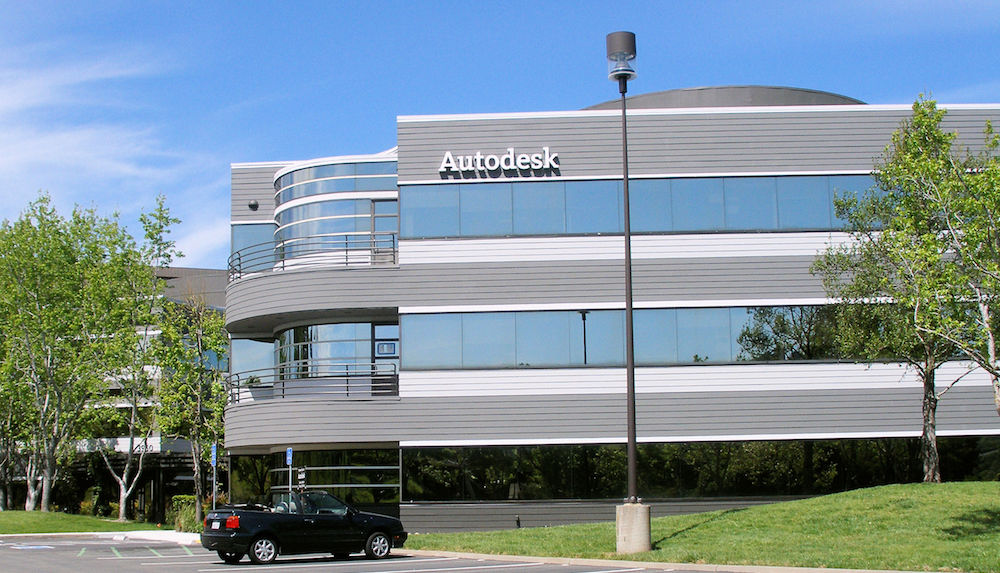Responding to customers who have been pushing them for greater workflow efficiencies when using their products together, Autodesk and Trimble have entered into an interoperability agreement that enables both companies to share Application Programming Interfaces (APIs) and developer tools for products in their respective portfolios.
The collaboration is also meant to show each company’s commitment to supporting open industry standards such as Industry Foundation Classes (IFC), and Construction Operations Building Information Exchange (COBie).
Autodesk and Trimble have similar arrangements with Bentley, and Autodesk recently struck an agreement on the manufacturing side with Siemens.
“We want to allow our customers to focus more on projects and spend less time moving data between Autodesk and Trimble products,” explains Jim Lynch, Vice President for AEC Product Development at Autodesk’s Boston office. He says this agreement will help “fill the API gaps.”
Tighter product-to-product integration can enable AEC users to share models, project files, and allow for the reuse of information throughout all phases of a project.
Lynch says the two companies have been working on this agreement for more than a year. His main contact at Trimble was its Vice President Bryn Fosburgh. Another key person in developing this agreement was Nicolas Mangon, Vice President of AEC Strategy and Marketing at Autodesk.
Lynch tells BD+C that this agreement does not entail any financial arrangement between the two suppliers, nor does he anticipate that either company would need to set up a separate team or department.
“Trimble benefits by our customers benefiting,” says Mark Sawyer, General Manager of Trimble’s General Contractor/Construction Management division.
Sawyer adds that going forward, each company will have access to the other’s APIs to test. Trimble also has an advisory group of customers that is likely to be involved in the testing.
Lynch expects that the industry will continue to pressure software vendors to develop products that integrate seamlessly. Sawyer agrees, and thinks the most immediate streamlining will be evident in document and data management, and BIM-in-field. But, he cautions, don’t expect interoperability agreements such as Autodesk-Trimble to be “wildly prolific,” either.
Related Stories
BIM and Information Technology | Jun 7, 2016
6 ways smart AEC firms are using computational design methods
Rapid prototyping, custom plug-ins, and data dashboards are among the common applications for computational design.
BIM and Information Technology | May 20, 2016
AIA and Autodesk introduce new feature to automate 2030 Commitment reporting data
The new automated connection will allow the more than 350 AIA 2030 committed firms to report their project and portfolio performance to the DDx directly from Autodesk Insight 360.
AEC Tech | May 10, 2016
Thornton Tomasetti launches new tech company
TTWiiN initially features six products and will add more via its own incubator.
Sponsored | BIM and Information Technology | May 10, 2016
Advanced laser scanning technology supports data collection and modeling efforts for Missouri’s Iatan 1 Power Plant
For the installation of a new heat exchanger, the power division of Black & Veatch contracted an engineering firm to laser scan the site, make a piping model in Autodesk® Revit®, and export it into AutoCAD® to deliver results.
AEC Tech | May 9, 2016
Is the nation’s grand tech boom really an innovation funk?
Despite popular belief, the country is not in a great age of technological and digital innovation, at least when compared to the last great innovation era (1870-1970).
Big Data | May 5, 2016
Demand for data integration technologies for buildings is expected to soar over the next decade
A Navigant Research report takes a deeper dive to examine where demand will be strongest by region and building type.
BIM and Information Technology | May 2, 2016
How HDR used computational design tools to create Omaha's UNO Baxter Arena
Three years after writing a white paper about designing an arena for the University of Nebraska Omaha, HDR's Matt Goldsberry says it's time to cherry-pick the best problem-solving workflows.
Drones | Apr 25, 2016
The Tremco SkyBEAM UAV is the first to be approved by the FAA for nighttime commercial operation
The SkyBEAM UAV is used for identifying energy leaks, rooftop damage, deteriorating façades, and safety issues without requiring scaffolding or cranes.
BIM and Information Technology | Apr 21, 2016
U.K. imposes BIM requirement on government projects
U.S. unlikely to follow suit.
AEC Tech | Apr 15, 2016
Should architects learn to code?
Even if learning to code does not personally interest you, the growing demand for having these capabilities in an architectural business cannot be overlooked, writes computational design expert Nathan Miller.

















